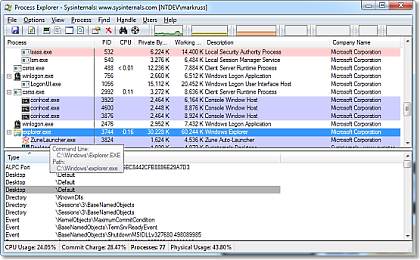

If he doesn’t have a clue, he’s probably not quite as good as he says. These tools are used by every single reputable computer guy - if you want to separate the wheat from the chaff, just ask your local PC repair guy what Process Explorer is used for. If you are refering to what is running inside one of the 'generic' Windows services, like svchost.exe, you should right click the one you want to look at, choose Properties and then the Services Tab. Then use a three line vbscript to send Alt + F, S, Enter, Alt + F, X. The main window you see when you first open PE shows both running applications and active Windows services. Start Process Explorer with the /s: switch.

Use Tasklist and either Findstr or the for command to parse out the PID of the processes you are interested in.

That’s right, there’s a full set of free tools to do almost any administrator task, from monitoring or starting processes to peeking under the hood to see what files and registry keys your applications are really accessing. There seem to be two (maybe three) approaches you can take.
#SYSINTERNALS PROCESS EXPLORER FOR FREE#
There are many other admin tools built into Windows, available for free on the web, or even through commercial sources, but none of them are quite as indispensible as the SysInternals suite of tools.


 0 kommentar(er)
0 kommentar(er)
